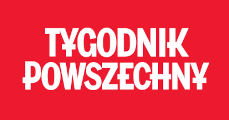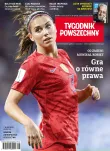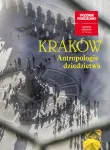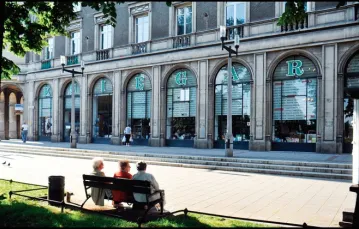Wykupienie dostępu pozwoli Ci czytać artykuły wysokiej jakości i wspierać niezależne dziennikarstwo w wymagających dla wydawców czasach. Rośnij z nami! Pełna oferta →
WHAT IS THE GENIUS LOCI OF KRAKÓW? How does the city experience its history? How do institutions and top-down initiatives affect that history? When will Cracovians start writing “Tourists go home!” on the walls? Maps of the city, symbolic geographies, and the changing context in which we interpret Kraków have been the subject of ethnographic research conducted over the past three years at the Jagiellonian University’s Institute of Ethnology and Cultural Anthropology. This is one of five national projects carried out within the framework of the HERILIGION consortium, which brings together academics from various European countries.
HERITAGE: HOLINESS AND SECULARISATION. The joint project is called “The Heritagisation of Religion and Sacralisation of Heritage in Contemporary Europe”. It is funded by the HERA (Humanities in the European Research Area) network under the Uses of the Past programme implemented by the European Commission and centres in 26 European Union countries. The initiator and leader of the HERILIGION consortium is Prof. Oscar Salemink from the University of Copenhagen, with whom Irene Stengs (Meertens Institute, Amsterdam; since 2018 she has acted as leader), Clara Saraiva (University of Lisbon), Ferdinand de Jong (University of East Anglia), and Anna Niedźwiedź (Jagiellonian University) cooperate as national team coordinators.
THE PRESENT DAY, IN OTHER WORDS, CHANGE. The researchers of the HERILIGION consortium focus on the social dimensions of heritage, analysing how different European societies look at the past and how they “sacralise” it. Which elements of the past build narratives about the present and future? Where and why do tensions arise in connection with buildings and places considered to be “religious heritage”?
WHAT NEXT FOR RITUALS? The Dutch part of the project deals with “religious traditions with heritage qualities”. The researchers analyse a variety of ritual celebrations as instances of using the religious past to shape present-day secular – although historically religious – Dutch society. They study the popularity of the St Matthew Passion in Dutch society, contemporary multimedia performances on Good Friday, and the customs associated with the Feast of St Martin.
RELIGIOUS DIVERSITY. In Portugal, the researchers focus on four sites where the religious and secular approach to heritage overlaps and where different religious traditions (Christianity, Islam, Afro-Brazilian religions, New Age) are present. In Sintra, the Catholic Shrine of Fátima, Mértola, and Mouraria, they look at the paradoxes that arise from the coexistence of different religious and secular discourses.
MONEY AND SECULARISATION. The British part of the project also focuses on specific locations. In Norwich and Bury St Edmunds, the researchers examine what in a post-secular age happens to the heritage of religious buildings. The local context is important – the renovation of cathedrals, abbeys, and churches is largely publicly funded in the UK. As a result, there is increasing pressure for restored monuments to be available for “secular use”. The researchers are concerned with how conservation policies affect the sacred dimension of old religious buildings.
RELIGIOUS HERITAGE MANAGEMENT. In Denmark, in turn, the HERILIGION consortium focuses on three UNESCO World Heritage Sites – the Jelling mounds, runic stones and church; Roskilde Cathedral; and Christiansfeld, which is historically associated with the Moravian Brethren. Each of these places has an active Protestant community. The researchers analyse the relationship between religious communities and institutions involved in heritage management and tourism promotion. ©℗
More information available at: www.heriligion.eu
KRAKÓW. ANTROPOLOGIE DZIEDZICTWA – CZYTAJ CAŁY DODATEK SPECJALNY >>>
KRAKOW. ANTHROPOLOGIES OF HERITAGE – READ MORE IN ENGLISH >>>
Supplement to Tygodnik Powszechny 28/2019
EDITORS: Anna Niedźwiedź, Marcin Żyła
PHOTO EDITING: Grażyna Makara
TYPESETTING: Anna Prusiewicz / DoLasu
PROOFREADING: Sylwia Frołow, Grzegorz Bogdał, Maciej Szklarczyk
TRANSLATION: Jasper Tilbury
COVER: view of the Market Square from the tower of St Mary’s Church | PHOTO: Beata Zawrzel / Reporter
Kraków 2019, ISBN 978-83-65811-05-9
This publication came about thanks to cooperation with the Polish team of the international HERILIGION consortium within the framework of HERA’s Uses of the Past programme. The project is financed by the HERA network, NCN, AHRC, FCT, DASTI, NOW, and the European Union under the Horizon 2020 research and innovation programme on the basis of grant agreement no. 649307. The Polish part of the project is carried out at the Institute of Ethnology and Cultural Anthropology at the Jagiellonian University’s Faculty of History. The Tygodnik Powszechny Foundation is a partner of the project. www.heranet.info








